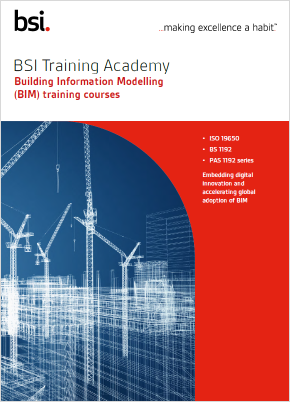This course will provide you with an understanding how Building Information Modelling (BIM) supports Lean principles to reduce waste in construction and asset management. This course will provide an overview of the standards that define BIM implementation and the fundamental processes of a Common Data Environment (CDE).
It will also help you understand ‘BIM according to ISO 19650’ – the new international standard (Part 1 and 2) from the perspective of clients and customers. The role of information in managing assets and projects more efficiently and the tools defined for this.
In addition, you’ll understand ‘BIM according to BS EN ISO 19650’ from the perspective of designers, constructors and supply chain. Responding to the client’s exchange information requirements (EIR). Tools used in the supply chain to manage and exchange information (CDE, COBie, IFC).
The course will help you to put BIM implementation into the broader context of information security, roles and responsibilities. You’ll reflect on the impact delivery for your organization and what next steps need to be taken.
This Online Course is available in English.
Please note: the price stated is excluding local taxes.
How will I benefit?
- Understand the rationale behind BIM implementation and to put this into the context of your own organization
- Understand the range of standards, tools and other documents that define and are used to implement BIM
- Understand how ‘BIM according to ISO 19650’ and BIM implementation helps asset owners manage asset information more effectively and helps project sponsors and project managers deliver better projects (commercially and technically)
- Understand how all types of suppliers (designers, constructors, specialists, asset contractors) respond to client requirements in BIM implementation, and what technical tools exist to support this, including COBie and IFC
- See how ‘BIM according to ISO 19650’ and BIM implementation provides a framework for better information security
- Understand the roles and responsibilities associated with ‘BIM according to ISO 19650’ and BIM implementation’
- Understand what next steps you need to take to be able to manage assets or deliver projects following the BIM implementation
Who should attend?
Anyone adopting BIM within their organization, their own work practices, or helping their clients or supply chains to adopt it. Construction and asset management professionals (project managers, asset managers, designers, constructors, manufacturers, maintenance contractors, information managers).
What will I learn?
- The basic principles of BIM
- Explain the terms ‘BIM according to ISO 19650’
- Explain the value of information through all stages of a project and asset lifecycle
- Explain why BIM is a determining factor for delivering projects on time and without waste and inefficiencies
- Explain the terminology relating to BIM
- The definition of BIM and why it is important
- Demonstrate the ability to use the standards that support BIM implementation
- Gain a general understanding of the ‘Information Delivery Cycle’ as outlined in ISO 19650-1
What's included?
- Detailed training course notes
- Lunch
- Refreshments
- BSI Training Academy certificate
NEW BIM Training Brochure
 Our experts have updated our BIM training courses to reflect the changes in the ISO 19650. Be one of the first to be trained in the new standard and understand what it means to you and your organization.
Our experts have updated our BIM training courses to reflect the changes in the ISO 19650. Be one of the first to be trained in the new standard and understand what it means to you and your organization.